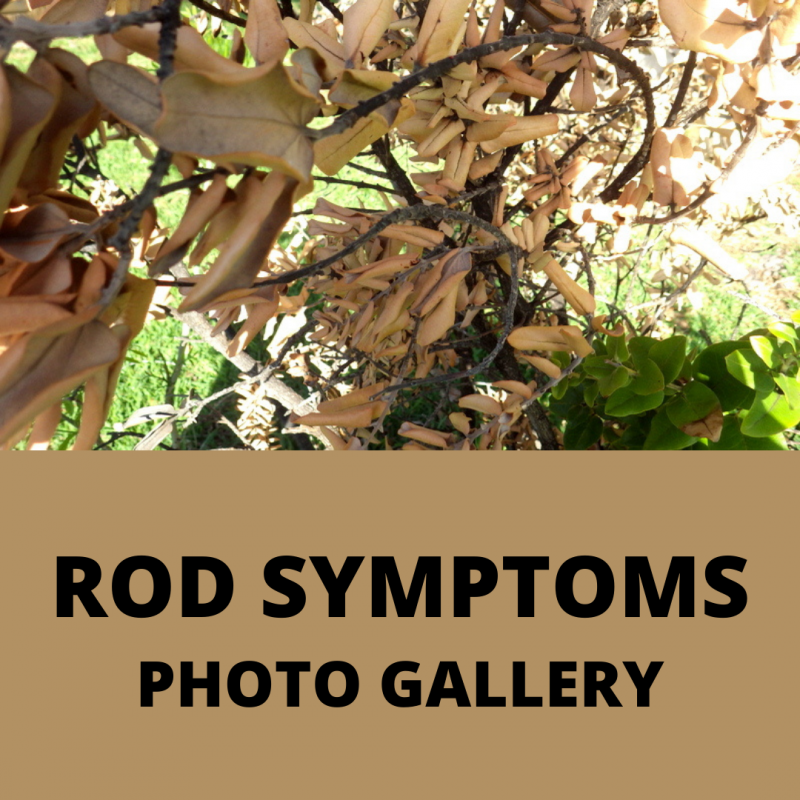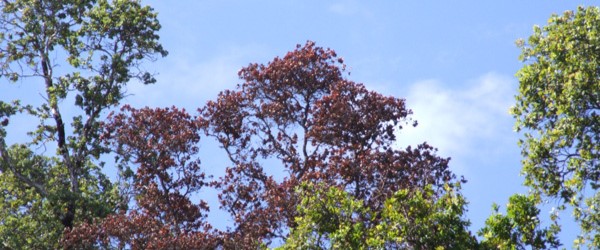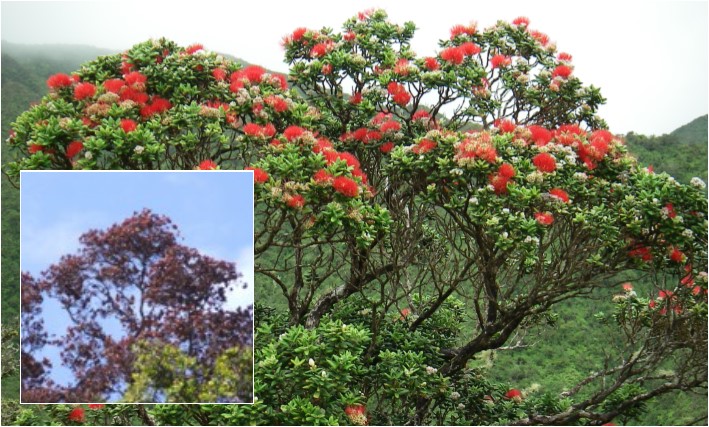If you suspect ROD, please submit photo/s and details to www.643pest.org or to OISC via email (oisc@hawaii.edu) or text (808-286-4616).
Rapid ʻOhiʻa Death (Ceratocystis lukuohia & Ceratocystis huliohia)
A new fungal pathogen known as Rapid Ohia Death (Ceratocystis fimbriata*) was identified on Hawaii Island in 2014. The fungus attacks and can quickly kill ohia trees (Metrosideros polymorpha). Ohia is endemic to Hawaii and comprises approximately 80% of Hawaii’s native forests. *Note: the species of Ceratocystis fungi that cause Rapid Ohia Death has since been recognized as two distinct species; Ceratocystis huliohia (ROD canker disease) and C. lukuohia (ROD wilt disease), with significantly different pathologies – although both ultimately lead to tree mortality. Also, as of December 2018, both strains of Ceratocyctis fungi which cause Rapid Ohia Death have been confirmed to exist on the island of Kauai.








Symptoms/Identification:
- Dead or dying ʻōhiʻa trees that have brown leaves attached.
- Branches or entire crown of ʻōhiʻa tree has brown leaves, giving the tree a “crispy” appearance.
- The presence of ROD can only be determined by sampling and testing the sapwood. ROD grows inside the tree, not visible on leaves or bark.
Impacts:
- ROD fungus grows inside the ʻōhiʻa treeʻs sapwood. It eventually chokes off the movement of water and nutrients causing mortality.
- The ROD fungus can be spread in soil, air and water.
- ʻŌhiʻa trees get infected with the ROD fungus by a wound in their bark.
Distribution:
- Hawaiʻi Island: Both strains (C. huliohia & C. lukuohia) are found in all districts.
- Kauaʻi: Both strains (C. huliohia & C. lukuohia) have been detected.
- Oʻahu: Only the less aggressive strain (C. huliohia) has been detected. (For more info on Oʻahu detections CLICK HERE)
- Maui: Only one tree has been detected with the less aggressive strain (C. huliohia).
- Molokaʻi and Lānaʻi have had no detections of ROD.
Information about Rapid Ohia Death is quickly evolving, and up-to-date information can be found at www.rapidohiadeath.org. To receive updates, you can also “like” the Rapid Ohia Death page on Facebook, at www.facebook.com/rapidohiadeath.
The Hawaii Department of Land and Natural Resources has issued a press release regarding Rapid Ohia Death and produced the video brochure below detailing the importance of this issue. The Hawaii Department of Agriculture (HDOA) has implemented a quarantine for ohia products on Hawaii Island to limit the spread of this fungus.
In 2015, the HISC awarded funds to the University of Hawaii to support a post-doctoral researcher to assist an interagency team of scientists in the Hilo area (including the University of Hawaii, USDA Agriculture Research Station, and US Forest Service) to study how this disease is transmitted and to find potential treatment options.
